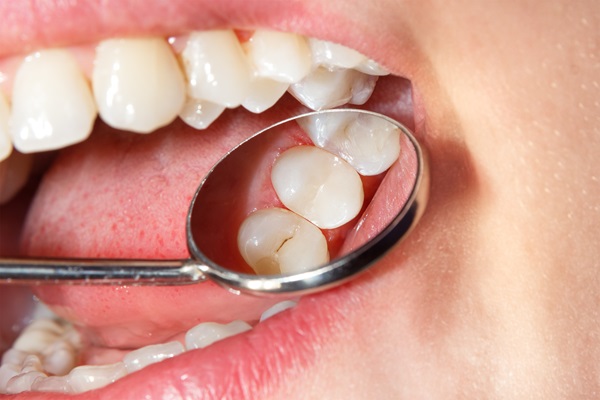What to Expect When Getting Dental Fillings for Cavities

Many people do not want to get dental fillings. The idea of sitting in the dental treatment chair can be intimidating, especially for those who had bad experiences with dentists. Fillings can improve the health of your teeth. Having them can help you keep your teeth longer. If you want to know what you should expect when you get dental fillings for your cavities, here are the details.
Before the treatment
The procedure for dental fillings is easy. The dentist can perform it at the clinic. Planning ahead will allow the patient to know how long the treatment will be. A dental filling treatment often lasts for an hour. This will be enough time for the dentist to perform dental X-rays and visual examinations. It will also be the right time to talk about the procedure.
Preparing the mouth
Numbing the surrounding tissues and teeth will happen first. The dentist will want the patient to experience the least level of pain. Rubbing a topical anesthetic in a jelly form on the affected teeth and the surrounding areas will accomplish this. Then, the dentist will inject an anesthetic into the gum area of the tooth or teeth. The dentist could also use other methods of sedation like laughing gas. These medications will relax the patient before and during the treatment.
Placing the rubber dam
Isolating the affected teeth can make the process quick. This will involve placing a rubber sheet in the patient’s mouth. This will allow the dentist to access each tooth better. The rubber dam also prevents tooth chips and liquid from entering the throat.
Removing the decayed areas
The dentist will then drill and grind out the decayed dental material. This is possible with an air abrasion tool, a drill, or a laser. Patients often fear this part of the process. But the numbing gel and anesthetics will reduce the discomfort. The dentist will continue cleaning the affected teeth with care.
Placing the dental fillings
There will be a space in the tooth after removing the decayed parts of the tooth. The dentist will roughen it with an etching solution. This will allow the adhesive to stick better. Placing the filling will come next. The hole needs sealing. This will prevent bacteria from entering that part of the tooth again.
The dentist will harden the bonding material with a curing light. This hardened material will protect the tooth from further decay or damage. Filing down some areas of the dental fillings will flatten them. The process will prevent the filled teeth from disrupting the patient’s bite.
After getting the dental fillings
Numbing is necessary during a dental filling treatment. This makes the procedure painless and comfortable for the patient. Numbing will last until two hours after the treatment. Different sensations in the mouth will start when the numbing effect fades. Here are some of the sensations a patient can feel when the numbing goes away:
- Pain when the jaw clenches
- Temperature sensitivity
- Pain when performing dental care practices
- Pain around the filling
- Gum tenderness
The causes of sensitivity
Pulpitis or the inflammation of the pulp can happen when the infection reaches the pulp. This can cause swelling of the gums. It can also cause the formation of a pus pocket beside the tooth. Pulpitis can be reversible when there is sensitivity in the tooth, but the pulp will heal up. Irreversible pulpitis happens when the pulp does not heal. For this, the patient will need a root canal procedure.
Sometimes, drilling heats up the tooth. This leads to pulp swelling or pulpitis. Drilling is necessary to remove the decayed part of the tooth. The bacteria can migrate to the pulp and cause harm if the dentist skips this step.
Bite changes can also cause pulpitis. The extra pressure on the treated tooth can crack the filling. This can cause problems in the pulp if bacteria enter the tooth. Sensitivity can also happen from above or beneath the filling. This pain may result from temperature variation or touch.
The numbness in the mouth will continue for another two hours or so after the procedure. Avoiding chewing or biting on the tooth will prevent pain. Hot or cold foods and drinks should be set aside for a while. The sensitivity in the treated teeth may continue for days or weeks after getting dental fillings. This type of pain often goes away on its own.
Your dental fillings can prevent dental damage or decay from worsening
Dental fillings can restore your teeth from damage or decay. Most people try to stay away from this treatment because of the pain. The procedure will be painless and rewarding. Seeing your dentist before getting your dental fillings will help you understand the treatment and its benefits.
Are you considering getting dental fillings in the Palm Desert area? Get more information at https://totalcareimplantdentistry.com.
Check out what others are saying about our dental services on Yelp: Dental Fillings in Palm Desert, CA.
Recent Posts
Think you might need a dental filling? Read on to learn more about this treatment. Tooth decay is one of the most common oral health conditions. When untreated, it can result in serious dental problems including tooth loss. Dental fillings restore the structure and function of the affected teeth. Knowing the importance of dental fillings…
If you have ever gotten a cavity, you most likely had it filled with a dental filling. Dental fillings are used to fill the space left by a cavity.The recommended time for a dental filling is when your dentist detects the beginnings of tooth decay and not when you notice a hole in your tooth.…
The process of removing decayed tooth material and replacing it with artificial material, called a dental filling, has been a successful way to fight against cavities for thousands of years. A cavity typically occurs when acid wears away the tooth structure and creates a hole in the enamel. Cavities are often painful, but they can…
A tooth that has a cavity will require a filling. A dentist needs to apply the filling as soon as possible to prevent additional tooth decay and damage. The filling of cavities does not merely fill the hole in the tooth caused by gradual decay. The dentist eliminates decayed tooth material to prevent more decay from…


